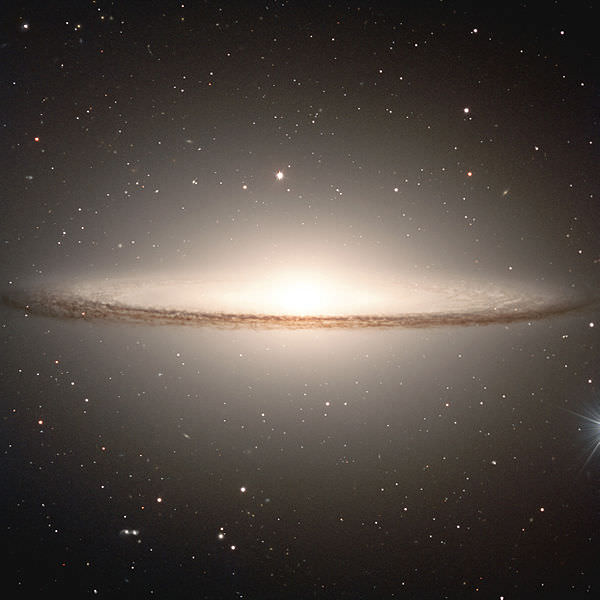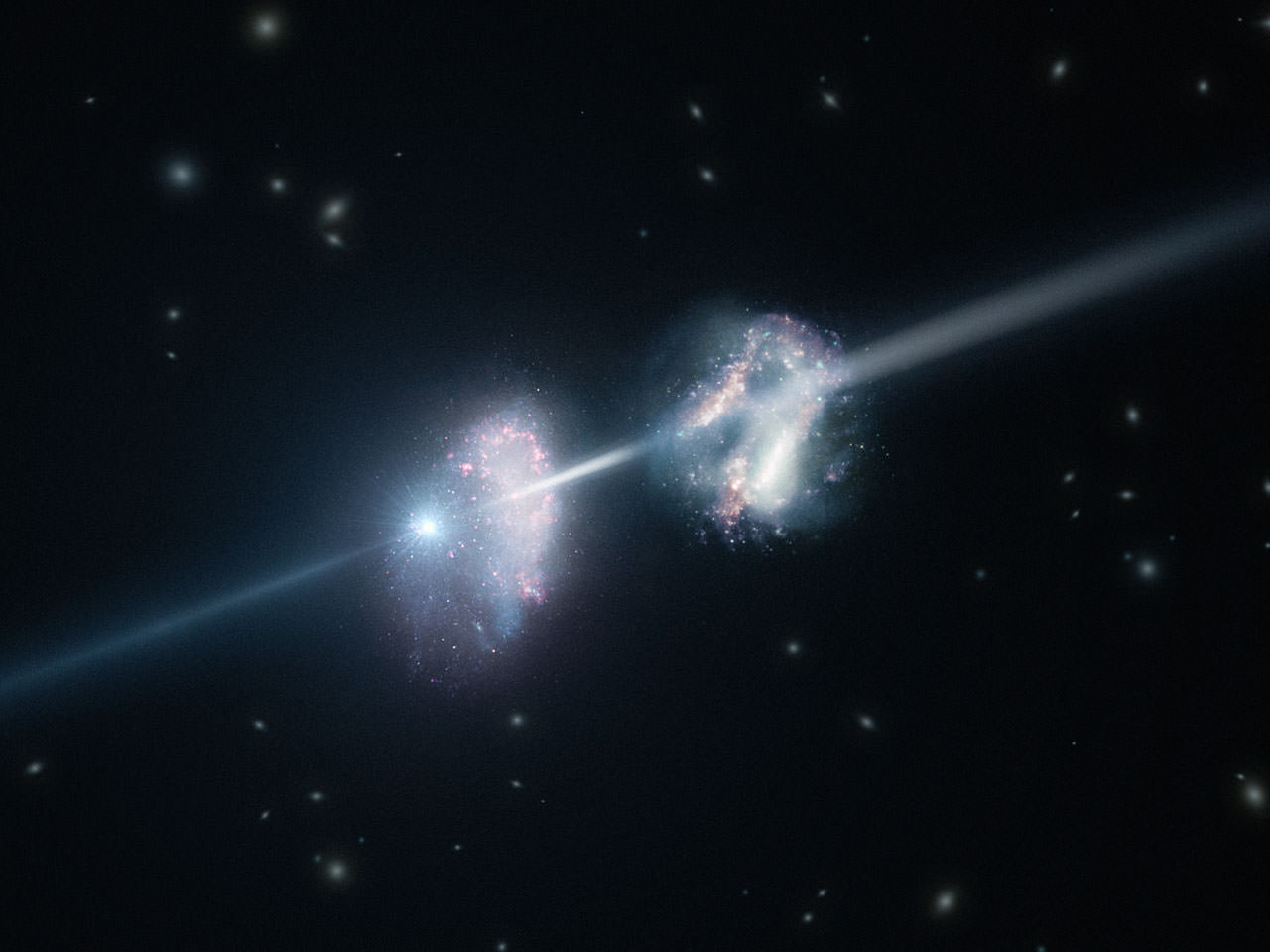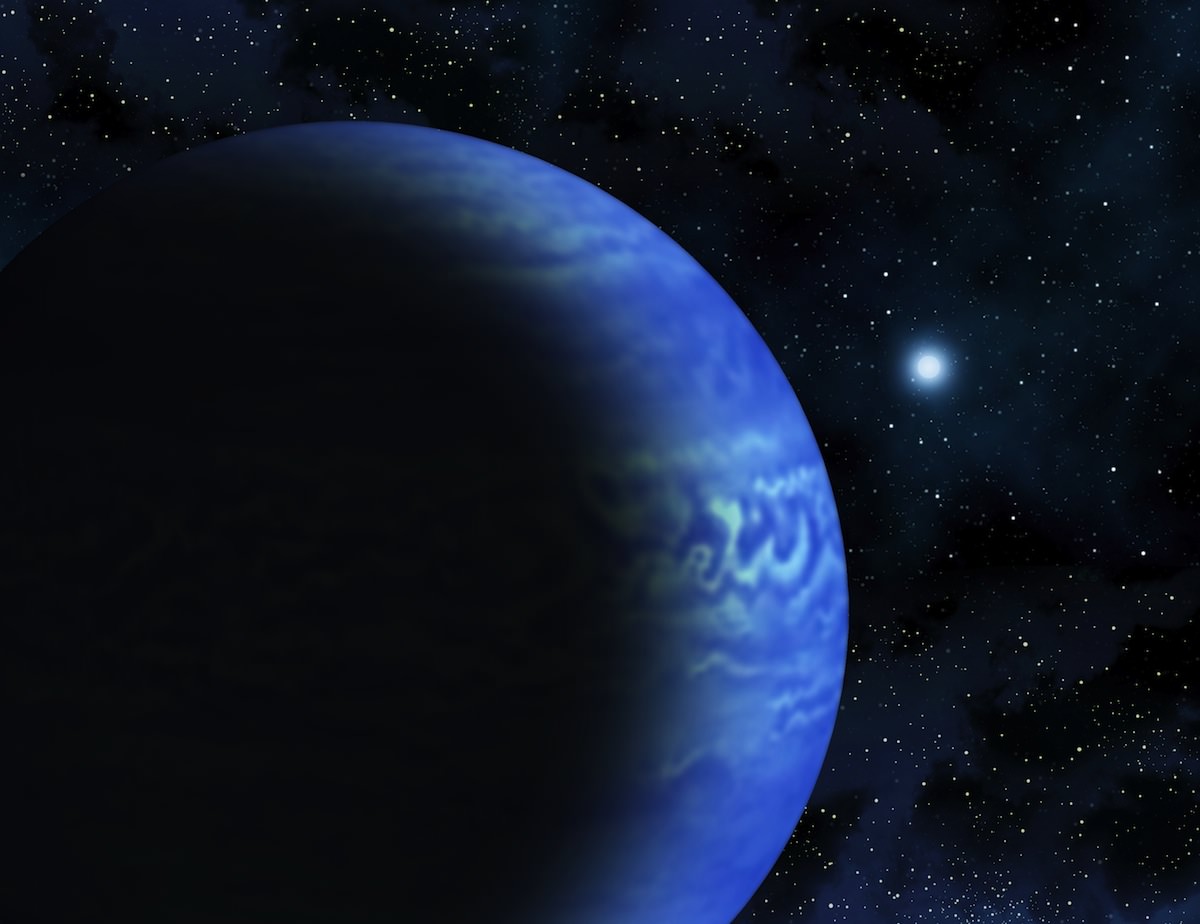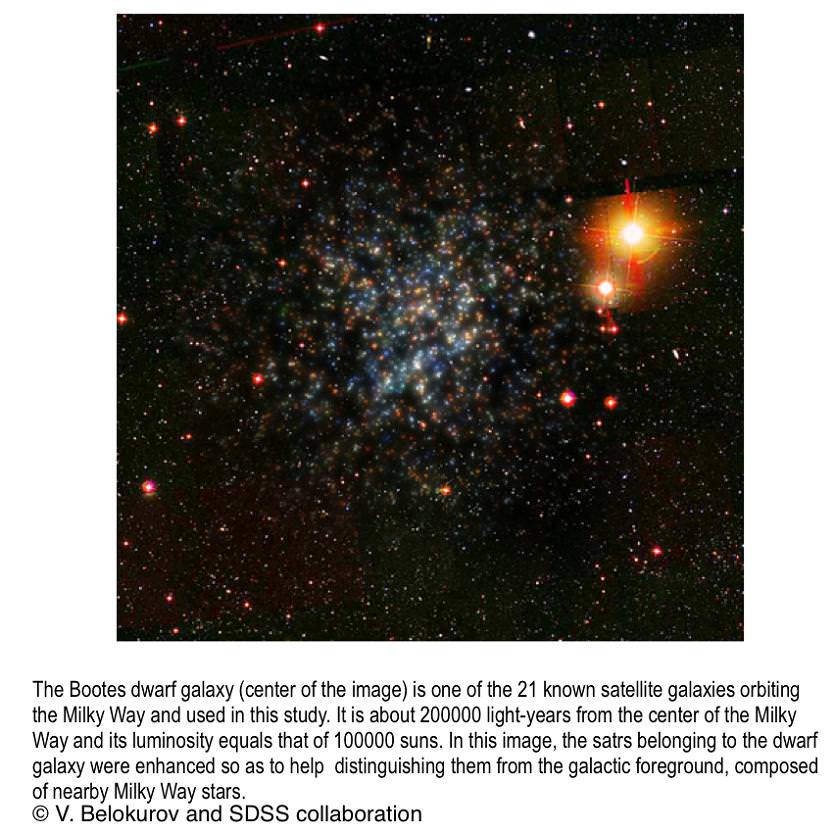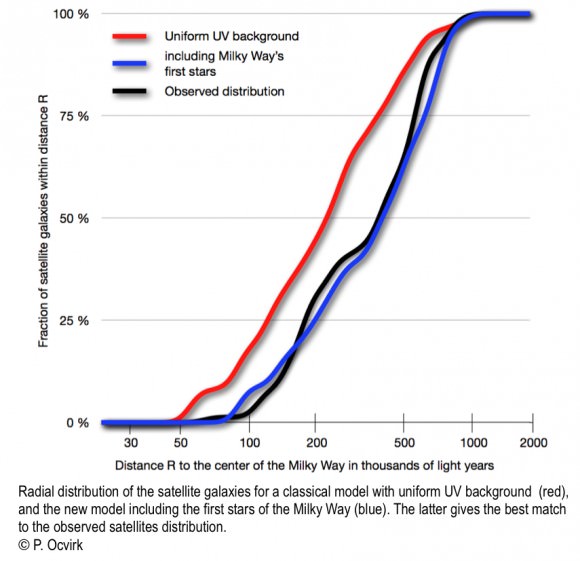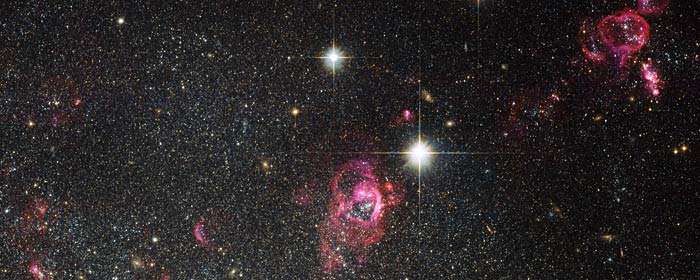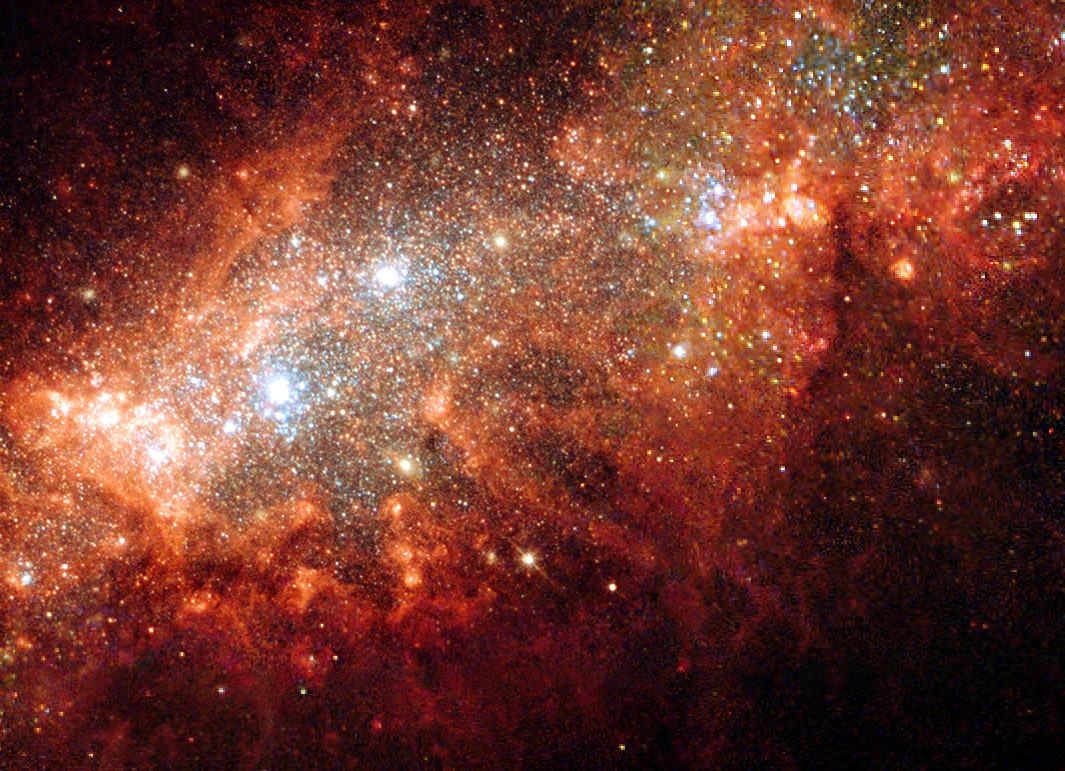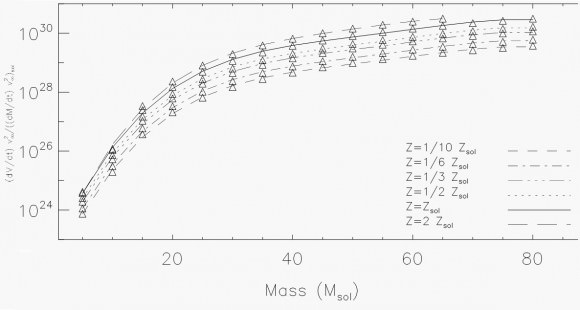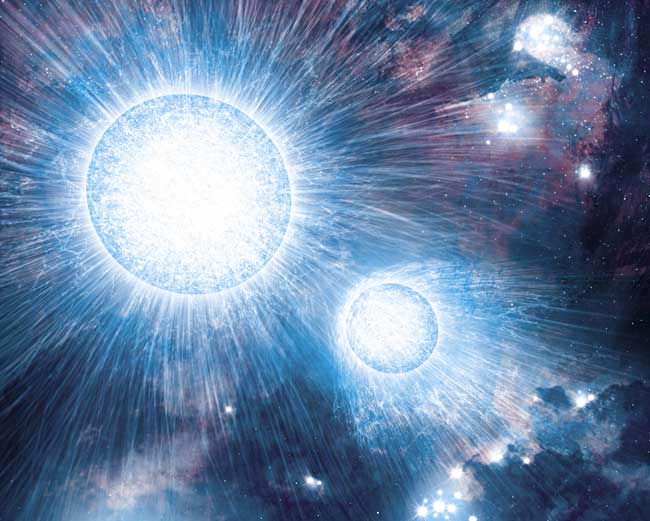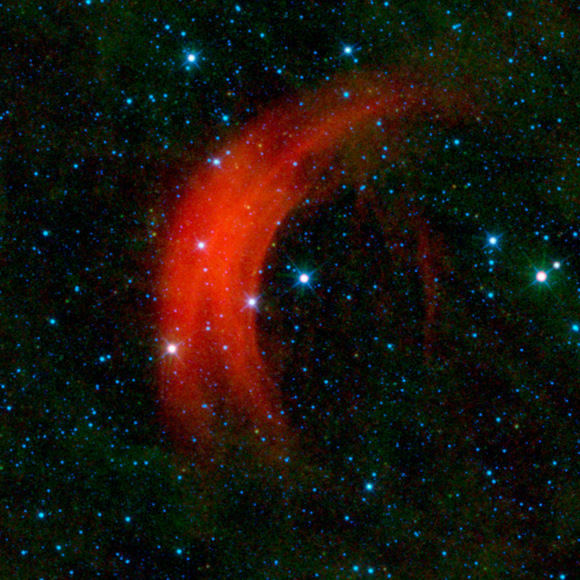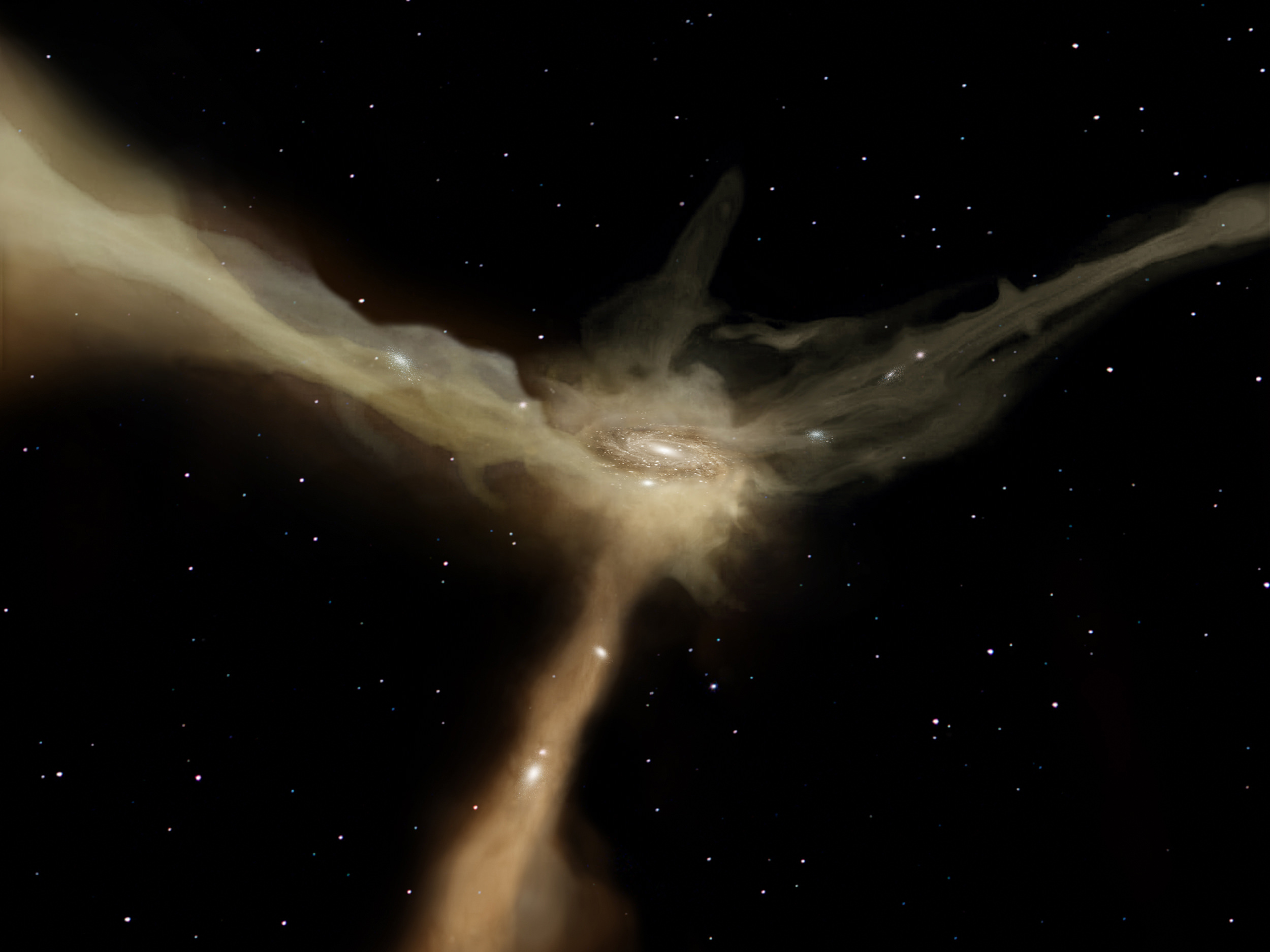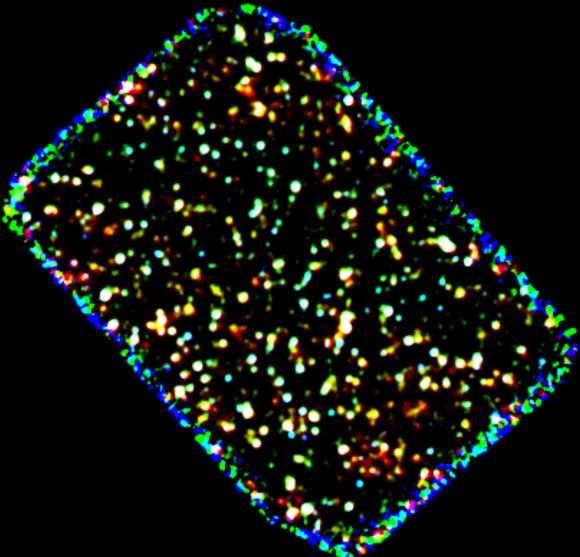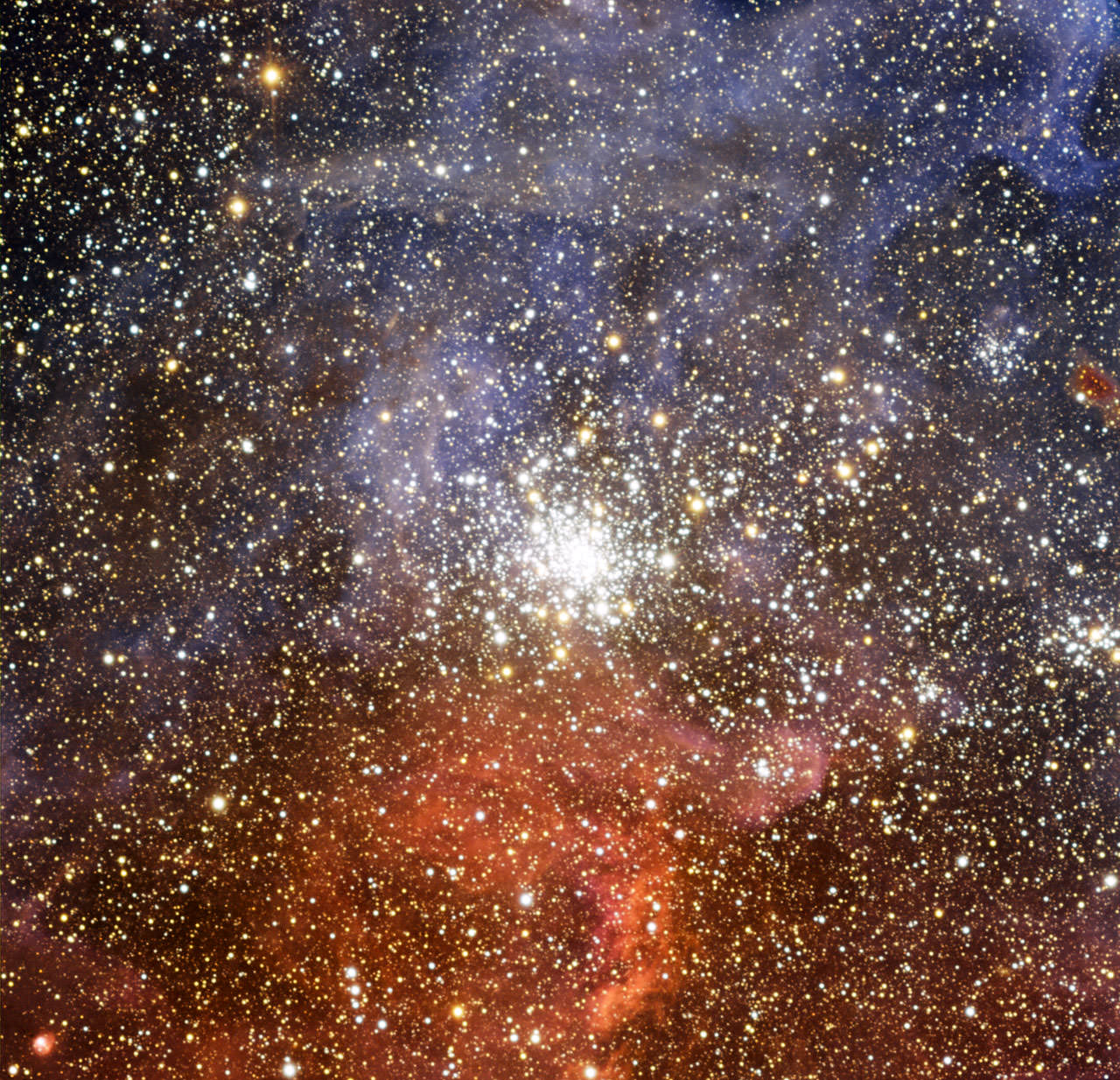[/caption]
Utilizing ESO’s giant telescopes located in Chile, researchers at the Niels Bohr Institute have been examining “antique” stars. Located at the outer reaches of the Milky Way, these superannuated stellar specimens are unusual in the fact that they contain an over-abundance of gold, platinum and uranium. How they became heavy metal stars has always been a puzzle, but now astronomers are tracing their origins back to our galaxy’s beginning.
It is theorized that soon after the Big Bang event, the Universe was filled with hydrogen, helium and… dark matter. When the trio began compressing upon themselves, the very first stars were born. At the core of these neophyte suns, heavy elements such as carbon, nitrogen and oxygen were then created. A few hundred million years later? Hey! All of the elements are now accounted for. It’s a tidy solution, but there’s just one problem. It would appear the very first stars only had about 1/1000th of the heavy-elements found in sun-like stars of the present.
How does it happen? Each time a massive star reaches the end of its lifetime, it will either create a planetary nebula – where layers of elements gradually peel away from the core – or it will go supernova – and blast the freshly created elements out in a violent explosion. In this scenario, the clouds of material once again coalesce… collapse again and form more new stars. It’s just this pattern which gives birth to stars that become more and more “elementally” concentrated. It’s an accepted conjecture – and that’s what makes discovering heavy metal stars in the early Universe a surprise. And even more surprising…
Right here in the Milky Way.
“In the outer parts of the Milky Way there are old ‘stellar fossils’ from our own galaxy’s childhood. These old stars lie in a halo above and below the galaxy’s flat disc. In a small percentage – approximately one to two percent of these primitive stars, you find abnormal quantities of the heaviest elements relative to iron and other ‘normal’ heavy elements”, explains Terese Hansen, who is an astrophysicist in the research group Astrophysics and Planetary Science at the Niels Bohr Institute at the University of Copenhagen.
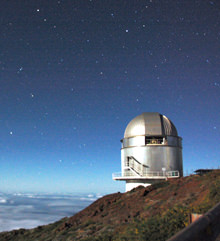
“After slaving away on these very difficult observations for a few years I suddenly realised that three of the stars had clear orbital motions that we could define, while the rest didn’t budge out of place and this was an important clue to explaining what kind of mechanism must have created the elements in the stars”, explains Terese Hansen, who calculated the velocities along with researchers from the Niels Bohr Institute and Michigan State University, USA.
What exactly accounts for these types of concentrations? Hansen explains their are two popular theories. The first places the origin as a close binary star system where one goes supernova, inundating its companion with layers of heavier elements. The second is a massive star also goes supernova, but spews the elements out in dispersing streams, impregnating gas clouds which then formed into the halo stars.
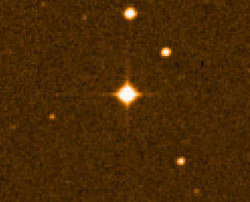
May all heavy metal stars go gold!
Original Story Source: Niels Bohr Institute News Release. For Further Reading: The Binary Frequency of r-Process-element-enhanced Metal-poor Stars and Its Implications: Chemical Tagging in the Primitive Halo of the Milky Way.

